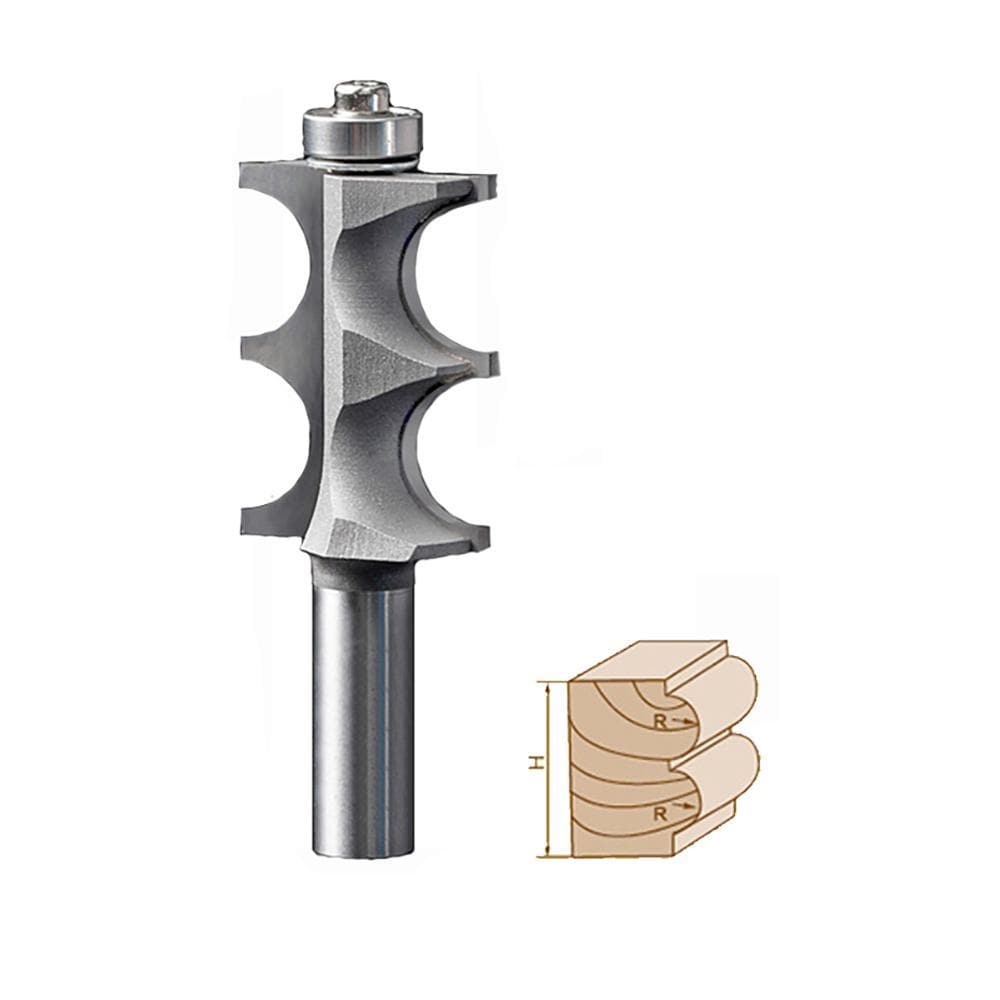
A double bead edging router bit is a specialized cutting tool used with a router to create decorative edges on woodwork. It is designed to produce two parallel beads or curves along the edge of a workpiece, adding an attractive detail to the finished piece and enhancing its overall appearance. In this response, I will provide a more detailed explanation of double bead edging router bits, their features, applications, and some tips for using them effectively.
Double bead edging router bits typically consist of a cylindrical body made of high-quality steel or carbide. The body has two cutting edges, one on each side, which are shaped in a way that they create the desired bead profile. The cutting edges are precision-ground
Double Bead Edging Router Bit|FindBuyTool
to ensure clean and accurate cuts. The bits are available in various sizes and shapes, allowing woodworkers to choose the one that best suits their project requirements.
One of the key features of a double bead edging router bit is its versatility. It can be used with different types of routers, including hand-held routers and table-
mounted routers. This enables woodworkers to achieve consistent and professional-looking results on a wide range of woodworking projects.
When using a double bead edging router bit, it's important to consider the size and shape of the beads you want to create. The diameter of the cutting edges will determine the size of the beads, and the shape of the cutting edges will determine the profile of the beads. It's a good idea to experiment on scrap wood or create a test piece to ensure the desired outcome before working on the actual project.
To use a double bead edging router bit, follow these general steps:
1. Securely mount the router bit into the router, ensuring it is centered and tightly fastened.
2. Adjust the router bit's height to the desired position. This can be done by raising or lowering the router's base or using a router lift if available. The height will determine the depth of the beads.
3. repare the workpiece by ensuring it is securely clamped or held in place to prevent movement during the routing process. It's also a good practice to make sure the workpiece is larger than the final size needed, allowing for any potential mistakes or adjustments.
4. Turn on the router and guide the bit along the edge of the workpiece, moving in the opposite direction of the rotation of the bit. Take care to maintain a steady and even feed rate to achieve consistent results. Using a router with variable speed control can be beneficial for achieving optimal cutting speed.
5. Make multiple passes if necessary to achieve the desired depth and smoothness of the beads. Take lighter passes rather than trying to remove too much material in a single pass, as this can lead to tear-out or a rough finish.
6. Once the routing is complete, inspect the workpiece for any imperfections or areas that may need additional sanding or touch-ups.
Double bead edging router bits are commonly used in woodworking projects where a decorative edge is desired. They can be used on various types of wood, including hardwoods, softwoods, and even some man-made materials like plywood or MDF. They are often employed in projects such as furniture making, cabinetry, trim work, and architectural millwork.
It's worth noting that safety precautions should always be followed when using any routing tool. Proper eye and hearing protection, as well as the use of push sticks or featherboards to keep hands and fingers away from the bit, are essential. Additionally, it's important to read and understand the manufacturer's instructions for both the router and the router bit before use.
In conclusion, a double bead edging router bit is a versatile and valuable tool for creating decorative edges in woodworking projects. By carefully selecting the appropriate bit size and shape, adjusting the router settings, and employing proper technique, woodworkers can achieve beautiful and professional-looking double bead profiles that enhance the overall aesthetic appeal of their workpieces.